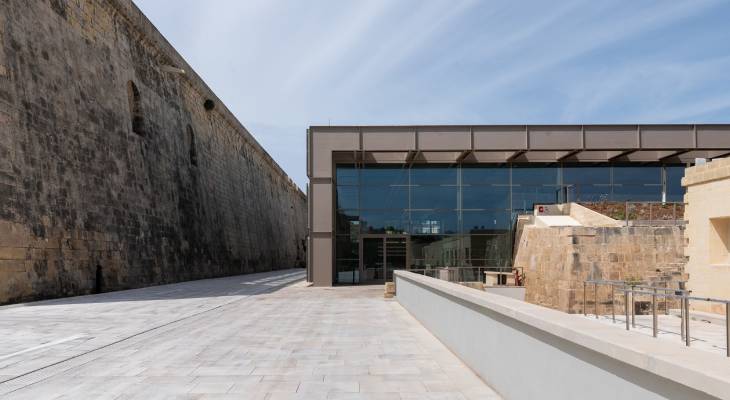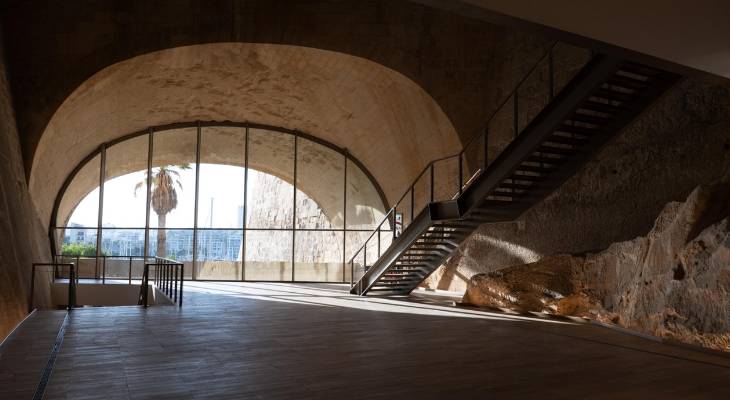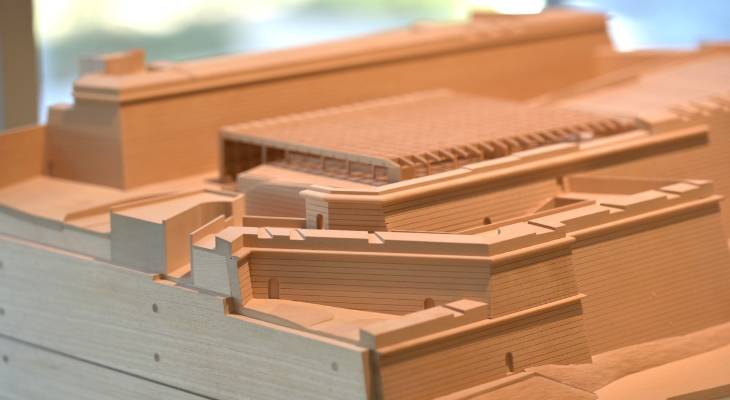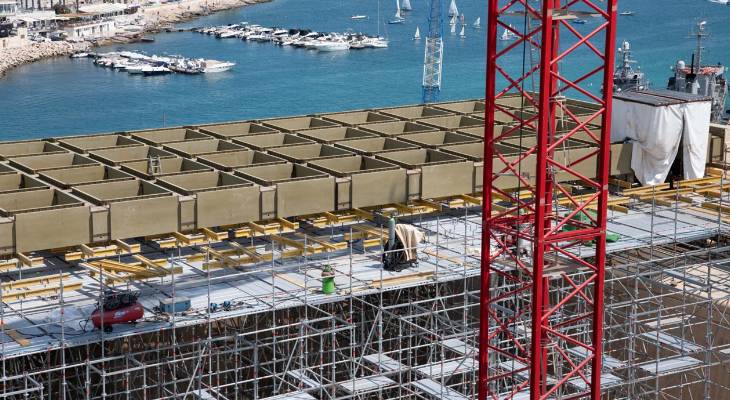‘We didn’t go for the Bilbao effect’ – How Malta’s newest cultural destination, MICAS, came to be
The exhibition 'Beyond The Bastions' will trace the history of the defensive structure that was once the Floriana Lines and its transformation into Malta’s newest cultural destination and home for contemporary art, MICAS.
For decades, Malta’s artistic community bemoaned the absence of a contemporary arts institution that could respond to the international ambitions of the island’s artistic community.
But the road that brought the Malta International Contemporary Art Space into being in 2024 was one paved with numerous challenges: not just an arduous construction process that was itself hampered by a pandemic and a European war, but also the research that was undertaken to select the best possible use of the site that would host MICAS.
A year since its grand opening last October, MICAS will now host a new exhibition featuring a rich display of photography and documentation on the genesis and development of Malta’s newest cultural destination.

Sean Mallia
Beyond The Bastions opened to the public on Saturday, 20 September 2025, with an exhibition of historical documents from the National Archives and the Bibliotheca, photographic and audiovisual documentation, plans and drawings of the historic and present site, and scale models of MICAS. The exhibition, hosted on MICAS’s first-floor gallery, details the story-arc of an important military site that has now been repurposed into a welcoming, public space for Maltese and international contemporary art.
It was clear back in 2013 that the gap in Malta’s cultural landscape, where no dedicated national platform existed to consistently support, present, and contextualise contemporary art, had to be addressed. The Coordinating Board for Cultural Projects, chaired by Ms Phyllis Muscat, was the first step in guiding the vision for MICAS, working closely with Malta’s Restoration Directorate, to try and balance international museum standards with the site that would eventually be chosen for this contemporary arts museum.
“Instead of pursuing the ‘Bilbao effect – a high-profile landmark strategy dependent on spectacle – we chose a more thoughtful model rooted in sustainability and local context,” says Dr Georgina Portelli, the deputy chairperson of MICAS and chair of its education committee.

Sean Mallia
Recognising that many of Malta’s historic sites remain underused or unrestored, the board aimed for integration rather than reinvention. The selection of MICAS’s location followed a careful review of several potential sites, including Fort St Elmo and the old Powerhouse in Floriana. The final choice, the Old Ospizio complex within the Floriana Lines, offered both generous space and a richly layered historical setting, complete with panoramic views of Marsamxett Harbour.
“MICAS is today a cultural institution embedded within the historic Floriana Lines, where heritage is preserved and enhanced through contemporary use. The result is a smart, site-specific response to Malta’s broader cultural and spatial challenges,” Dr Portelli says.
Additionally, the choice of the site also influenced a decision not to have the museum’s galleries as traditional white-walled boxes. Embedded in the landscape and shaped by the site’s historic architecture, MICAS’s large steel-and-glass roof envelopes the gallery spaces, which follow the terrain’s natural terracing.
“The structure allows natural light and views of the surrounding bastions and harbour to filter in, creating a strong sense of place and openness. Rather than covering up the old stone walls, the museum showcases their raw textures and monumental scale: they are part of the visitor’s experience.”
“The spatial layout is a dynamic environment that encourages movement and exploration, so that visitors don’t just look at art but navigate a layered space where architecture, history, and creativity intersect. And with outdoor spaces, exhibitions are blended with landscape, turning the whole site into an immersive cultural journey.”

Roberto Goodman
MICAS executive chairperson Phyllis Muscat says Beyond the Bastions celebrates not just the conviction that inspired an institution that honours Maltese contemporary art, but also the vision to turn the Floriana Lines into a new, creative space. “These fortifications, once shaped by the logic of defence, beckoned for transformation into spaces of creative possibility. Today MICAS stands as proof that small nations can dream large dreams, with Malta claiming its rightful place in the international cultural conversation.”
Dr Georgina Portelli said the exhibition – the third MICAS exhibition in 2025 following The Space we Inhabit and Ray Pitrè’s Figure in Rods – will delight those with a passion for history and architecture, but also the general public, who will learn how these ancient walls were brought to life once again.

Sean Mallia
Dr Portelli hosted a MICAS Art Talk on Saturday, 20 September with a panel of speakers who have closely worked with MICAS on its development: they include IPO Studio architects Stefano Combet, Agnese Cacciamani and Prof. Carlo Terpolilli, architect Jean Frendo from the Restoration and Preservation Department, curator and architect Konrad Buhagiar, and MICAS Artistic Director Edith Devaney.
“MICAS’s design acknowledges the site’s military history. Barbara’s Arch, which once marked the boundary between the fortified land and the sea, is today a visual gateway that links the museum to Marsamxett Harbour,” Dr Portelli said.
“Carlo Terpolilli and his team at IPO Studio understood this poetry of place. The glass and steel roof, and the contemporary galleries, embrace the ancient limestone, integrated within the terraces of the Ritirata itself. The MICAS design has allowed us to reveal the history of the Floriana Lines, inside a space where contemporary art can flourish.”